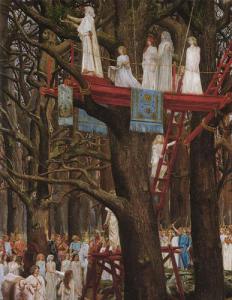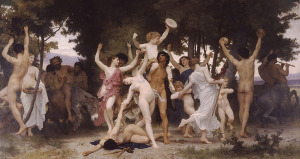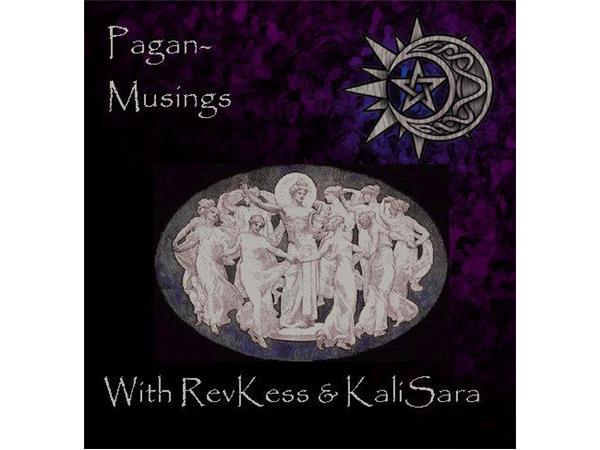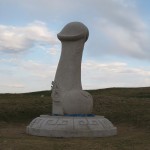Over at Alison Leigh Lilly’s blog, Peace, Poesis, and Wild Holy Earth, she brings some wonderful insight to the question of Pagan (in her case Druid) identity:
“As a religion, modern Druidry has grown up around the archetype of the Druid as the wise sage, the inspired poet, the bright-eyed seer and the lover of nature. That archetype of the Druid is the acorn from which the oak of Druidry as a religion grows and expands, reaching limbs in all directions, sending down roots deep into the earth and the present moment. The Druid archetype is the ideal that helps to shape and guide the religious lives of those who practice Druidry — just as the acorn contains within itself the genetic patterns necessary to create the mature oak, and yet each oak itself must draw nutrients from its immediate environment and will grow in its turn to fit its own place and time. No two oaks that grow in the wild will be the same, and that process of growth is never-ending as each new branch, twig, leaf and root seek their own way towards sunlight and soil.”
I think what Alison says about Druidry could be said of Paganism, Witchcraft, etc. It is perhaps the archetypes of the Druid, the Pagan, the Witch, the Magician and so on that are the seeds of our respective identities, more than the reality of any ancient Pagan past. I also appreciate Alison’s observation that these archetypes do not limit or circumscribe our respective identities, as each of us has to grow our identity in the present, and each of us will do so in a different way. But what can bind us together is the shared archetype.
So, Alison is a Druid because the image of “the wise sage, the inspired poet, the bright-eyed seer, and the lover of nature” calls to her.

And I call myself a (Neo-)Pagan, because the image of the maypole-dancing, idol-worshiping, and fornicating-in-the-forest non-Christian calls to me.

While others are called by the image of the Witch, the powerful woman on the margins of society, the healer and visionary.
Of course, the Pagan and (even more so) the Witch archetypes are different from the Druid, in that they have strong negative connotations in our society. (I have never known someone to be called a Druid in a pejoritive sense.) But for some of us, it is precisely because these terms carry negative connotations that we embrace them and seek to reclaim them. Part of the reason I identify as (Neo-)Pagan is actually because the term is synonymous with irrelegion and hedonism for many Christians, and because my religion is so different from Christianity that some Christians don’t even recognize it as a religion. (Check out this article on Pagan religion in the world’s least “religious” country, recently posted on Wild Hunt. http://www.bbc.co.uk/news/worl…..e-14635021 ) I like the challenge that the name “Pagan” presents to others. And I suspect that many who identify as Witch feel the same. As Cynthia Eller writes in Living in the Lap of the Goddess:
“For spiritual feminists, being a witch, saying one is a witch, is most often a feminist statement, the symbolic encapsulation of a feminist political program. The witch is the powerful outsider, the despised and excluded person who is threatening the established order. All women are witches, according to some spiritual feminists, whether they want to be or not, because they possess nature (female) powers linked to childbirth and their intimate communion with nature, and they are therefore compelled to be outsiders to a male-dominant society.”
“Druid” also seems a little different because it actually was a specific religion, or as Alison points out, a class of people in a specific religious culture. Perhaps this is part of the appeal of the Druid archetype. As I understand it, “Pagan” and “Witch” were always pejoratives that were applied by people to outsiders and never really embraced by anyone until recently. I’ve heard (read) people from hereditary witchcraft traditions say that their grandmother or whatever told would acknowledge that other people might call what they do “witchcraft”, but they eschewed the terms themselves.
I am curious though if the archetype of the Druid, “the wise sage, the inspired poet, the bright-eyed seer, and the lover of nature”, like the archetypes of the Pagan and the Witch which our modern identities grow out of, is really more a product of Romanticism than any genuine reflection of an ancient culture. I suspect that Ronald Hutton addresses this in his recent book, Blood and Mistletoe: The History of the Druids in Britain, which I still need to check out.















